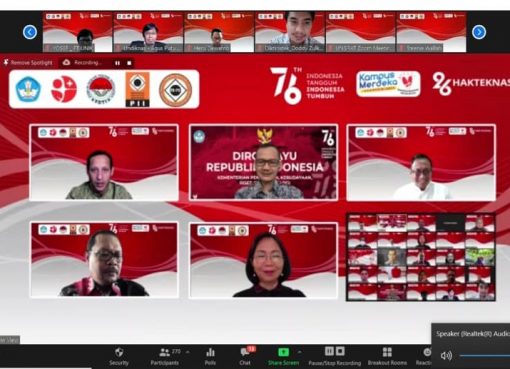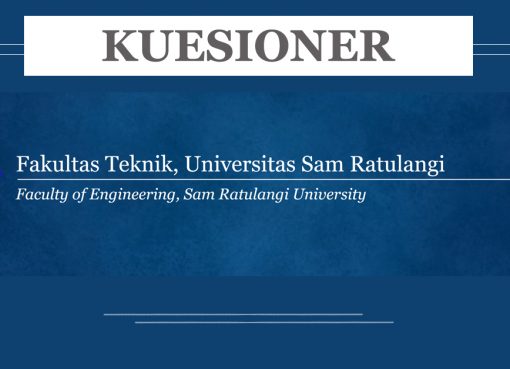A. Background: Urgency of KPI Change
The Main Performance Indicators issued by the Minister of Education and Culture through the Decree of the Minister of Education and Culture Number 754/P/2020 are new performance measures for universities to create adaptive universities with more concrete output-based.
Indonesia's 2045 vision to become a developed country with the fifth largest GDP in the world, needs to be supported by human resources who have the knowledge and abilities who are ready to compete at the international level. The nation's problems, as well as future job opportunities will no longer rely on natural resources, but rather on the human ability to work. Universities as institutions of science, knowledge, research, and community service, are required to be more focused in realizing their performance targets. One of the keys in regulating the performance of higher education institutions is through the Main Performance Indicators of State Higher Education (IKU-PTN) which are stipulated through the Decree of the Minister of Education and Culture. The development of higher education itself has been mandated through the Regulation of the Minister of Education and Culture of the Republic of Indonesia Number 22 of 2020 concerning the Strategic Plan of the Ministry of Education and Culture for the Year 2020-2024. There are three development targets, namely: 1) Increasing the quality of learning and the relevance of higher education; 2) Improving the quality of lecturers and education staff; and 3) The realization of quality management of the Directorate General of Higher Education. Universities are expected to be able to manifest these three goals through increasing the capacity and quality of the education process and management that they are responsible for. The KPI-PTN determined must be able to focus on the three development mandates. Apart from being based on the mandate of developing higher education, the IKU-PTN must be able to become a measuring tool as well as an accelerator for policy development Merdeka Belajar: Kampus Merdeka which has been stipulated through the Regulation of the Minister of Education and Culture Numbers 3, 4, 5, 6, and 7 of 2020. Through this policy, the Ministry of Higher Education seeks to guarantee higher education institutions to have high adaptability to changing times, having a more direct impact on society. , and able to achieve international higher education standards. Guarantees of convenience and sharper targets are also given to lecturers as the main resources in higher education. A magnificent building will feel empty without being filled by qualified lecturers. Lecturers are encouraged to be able to carry out problem-based, collaborative learning, and not only rely on learning in the classroom. As a final result, policy Kampus Merdeka is expected to provide a good climate for the development of student interests and talents. Students can hone their skills in innovative, flexible learning situations, based on student curiosity and interest, and according to problems in society and/or industry needs. So that when students graduate, they are able to become human resources who are ready to learn for life, are adaptive, and have high competitiveness. In order to realize the ideals of higher education, changes must be made in the performance assessment of PTN which will be assessed based on the KPI which is a performance contract between the PTN and the Ministry of Education and Culture. The latest KPI stipulated in the Decree of the Minister of Education and Culture Number 9/P/754 has three main indicators. First, the quality of graduates as measured by graduates getting decent jobs, and students getting off-campus experience. Second, the quality of lecturers and lecturers is measured by Lecturers who are active outside the campus, Practitioners teach on campus, and the results of lecturers' work are used by the community and get international recognition. Third, the quality of the curriculum that has sub-indicators include study programs in collaboration with world-class partners, collaborative and participatory classes, as well as the existence of international standard study programs. In addition to binding to the performance contract, a good public policy must also regulate the funding scheme so that it is more in line with the indicators that have been set. Therefore, the amount of funding for the following year will be determined based on the level of achievement of the KPI target compared between PTNs with the same type of law. Changes in funding also have at least three main policies. Performance Contract-based funding between the Ministry of Education and Culture and PTN, secondly there is a "Matching Fund" for the additional income that has been generated by PTN, and finally there is a "Competitive Fund" or funds for aspiration projects that are planned by PTN.
B. Purpose: New KPI Basic Principles
The purpose of the establishment of the Main Performance Indicators of Higher Education established through the Decree of the Minister of Education and Culture Number 754/P/2020 is to achieve rapid progress as the strategic plan of the Ministry of Education and Culture has been mandated by the Regulation of the Minister of Education and Culture Number 22 of 2020, as well as policies Kampus Merdeka. Every State Universities and Higher Education Service Institutions within the Ministry of Education and Culture must be guided by the main performance indicators in:
a. set KPI targets;
b. prepare contract documents or performance agreements;
c. implement KPI;
d. perform KPI monitoring;
e. perform KPI evaluation;
f. carry out continuous improvement of KPIs; and
g. report the results of the achievement of KPI
For the expected rapid progress, the new Higher Education Key Performance Indicators have been designed based on the following principles:
1. Increasing the relevance of higher education to the needs of industry, the business world, and the world of work. For example, the new Key Performance Indicators invite Practitioners to become Lecturers and encourage study programs to involve partners from industry, business, or the world of work in development and implementation.
2. Give freedom to universities to choose the advantages they want to develop.
New Key Performance Indicators, but freed up to focus on performance achievements on self-selected indicators. The new points system assesses universities based on overall achievement, but recognizes universities with excellence in certain indicators.
3. Prioritizing targets so that universities can focus on pursuing the changes that matter most. KPI 4: On-Campus Teaching Practitioners are important. Eight Key Performance Indicators have been selected as indicators of change that will have the most impact on the quality of graduates, the quality of lecturers, and the quality of the curriculum.
A more technical explanation of the KPI in accordance with the Decree of the Minister of Education and Culture of the Republic of Indonesia Number 754/P/2-2020 concerning Key Performance Indicators of State Universities and Higher Education Service Institutions within the Ministry of Education and Culture in 2020
- IKU-1 Graduates Get Decent Jobs
- IKU 2 Students Get Off-Campus Experience
- IKU 3: Lecturer Activities Outside Campus
- KPI 4: Practitioners Teach On-Campus
- IKU 5: Lecturer's Work Is Used By The Community Or Gets International Recognition
- IKU 6: Study Program in Collaboration with World Class Partners
- KPI 7: Collaborative and Participatory Class
- IKU 8: International Standard Study Program






Comment here